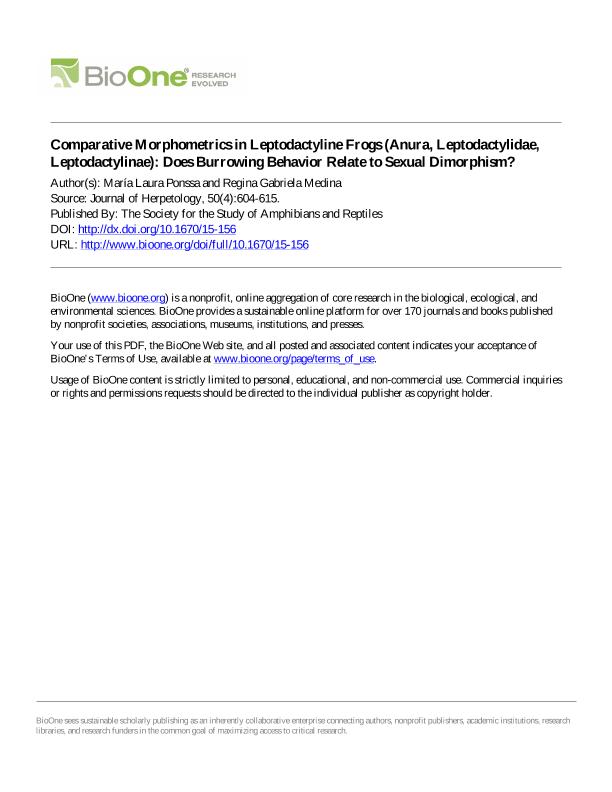Artículo
Comparative Morphometrics in Leptodactyline Frogs (Anura, Leptodactylidae, Leptodactylinae): Does Burrowing Behavior Relate to Sexual Dimorphism?
Fecha de publicación:
12/2016
Editorial:
Society for the Study of Amphibians and Reptiles
Revista:
Journal of Herpetology
ISSN:
0022-1511
Idioma:
Inglés
Tipo de recurso:
Artículo publicado
Clasificación temática:
Resumen
Fossorial habits occur in many animal lineages and usually involve both morphological and physiological adaptations that may evolve independently. Burrowing behavior in some species of the anuran subfamily Leptodactylinae involves the specialized use of the hind limbs and/or head. The aim of this study was to identify the morphometric characters associated with burrowing behavior in species of this subfamily. We then hypothesized that, as this habit is usually associated with males, we would find sexual dimorphism in head and hind-limb morphology in the burrowing species but not in the nonburrowing species. We compared 500 specimens from 24 species using phylogenetic statistical analyses and phylogenetic mapping of sexually dimorphic characters. The results demonstrated the following: 1) There was no correlation between the measurements of the limbs, head, or tarsal tubercle and burrowing behavior in the analyzed species; 2) there was no sexual dimorphism related to burrowing behavior reflected in measurements of the head or hind limbs; and 3) sexual dimorphism in the morphometric characters always was derived. Modifications of the ridged snout and increased ossification in the nasal region of the males of the fossorial species appear to be sufficient adaptations for burrowing.
Palabras clave:
Morphology
,
Anurans
,
Fossorial Habits
,
Dimorphism
Archivos asociados
Licencia
Identificadores
Colecciones
Articulos(UEL)
Articulos de UNIDAD EJECUTORA LILLO
Articulos de UNIDAD EJECUTORA LILLO
Citación
Ponssa, María Laura; Medina, Regina Gabriela; Comparative Morphometrics in Leptodactyline Frogs (Anura, Leptodactylidae, Leptodactylinae): Does Burrowing Behavior Relate to Sexual Dimorphism?; Society for the Study of Amphibians and Reptiles; Journal of Herpetology; 50; 4; 12-2016; 604-615
Compartir
Altmétricas




